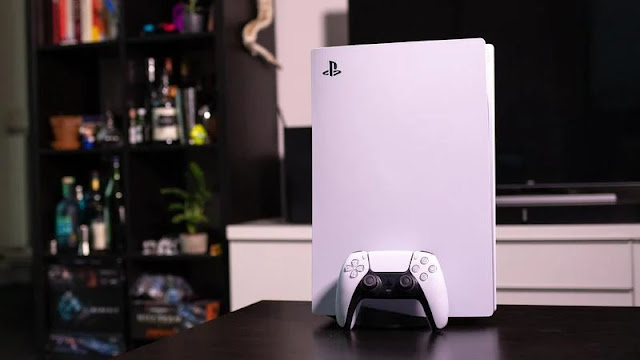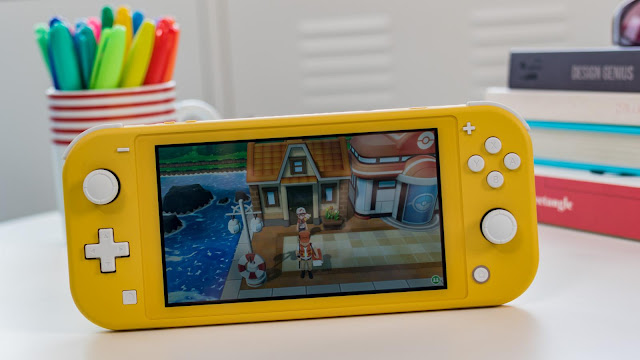What is the best game console? Should you go for the PS5 or Xbox Series X? Or maybe go for a handheld hybrid like the Nintendo Switch OLED? What about portable consoles like the Switch Lite, or a gaming-focused streamer like the Nvidia Shield? There are also the last-gen – but still popular – PS4 and Xbox One to consider.
Game consoles are must-haves for many of us, but they’re expensive and each offers something slightly different, be it the graphical power, design or game availability. It can be confusing if you’re not a hardcore gamer, but that’s where we at Tech Advisor come in; we’ve ranked the best games consoles available right now to give you an idea of what to buy.
Keep in mind that you can still pick up old consoles and games at much cheaper prices, and you can also check out our best games deals to make sure you’re getting the best price.
But, for those on the hunt for the ultimate game console, carry on reading.
1. PlayStation 5
- Next-gen 4K@120fps performance
- Unmatched DualSense controller
- Extravagant design
Cons
- Large dimensions
- Small internal SSD
The PlayStation 5 represents the pinnacle in next-gen gaming, offering solid 4K@60fps (or even 120fps with a compatible TV) gameplay alongside lightning-fast load times thanks to the inclusion of a custom-designed SSD – although it is a little small at 825GB, and unlike the Xbox Series X, it’s pretty difficult (and pricey) to upgrade the internal storage.
When it comes to performance, expect ray-tracing, high-quality textures, improved particle effects and a generally higher fidelity experience than that of the PS4, but it’s arguably the DualSense controller that truly separates it from the competition.
Sony’s DualSense controller sports adjustable triggers, meaning the bumpers can better simulate the trigger of a gun or pulling back a bow before firing, and the advanced haptic motors make things feel much more realistic too. The two technologies combined offer a huge step forward compared to the Xbox controller, which offers minimal differences at best.
There may not be a lower-powered variant like the Xbox Series S, but there is the disc-less PS5 Digital available at a discount without compromising on next-gen performance.
Be warned though: the PS5 is a chonk, no matter which variant you go for.
Read our full PlayStation 5 review
2. Xbox Series X
- Next-gen 4K@120fps performance
- Compact design
- Backwards compatibility
Cons
- No changes to Xbox controller
- Slower loading times than PS5
The Xbox Series X is Microsoft’s answer to next-gen gaming, offering the same 4K@120fps performance with ray-tracing, high-quality textures and improved particle effects as the PS5, and although not quite as fast as Sony’s bespoke SSD, the inclusion of an SSD means games are snappy too.
There’s a large library of games available to play, offering backward compatibility all the way back to the original Xbox – something that the PS5 can’t quite compete with, only offering compatibility with PS4 titles outside of its PS Now service.
The design is much more muted than the competition, sporting an all-black design with green highlights within the vent atop the console, but it still stands tall at 30cm.
It’s a solid contender for the title of best console, when it comes down to it, the ‘safe’ update to the Xbox controller is what lets it down – while Sony went all-in on all aspects of the next-gen console experience, it seems Microsoft focused only on the tower itself.
Read our full Xbox Series X review
3. Xbox Series S
- Cheaper than Xbox Series X
- Speedy SSD performance
- Great for access to Xbox Game Pass
Cons
- Caps out at 1440p
- Can't run Xbox One X (or Series X) enhancements
The Xbox Series S doesn’t offer the same high framerate 4K gameplay as the Series X or PS5, but it does offer key upgrades including the speedy SSD and the updated Xbox UI, and it’s much cheaper than the hero consoles too.
In fact, if you’ve got a 1440p display, it could be the ideal console for you – especially when you consider that it’s much smaller than the other next-gen consoles, making for a better TV-side companion. It could also be a cheap-ish way to get your hands on Microsoft exclusive titles if you primarily play on another console, especially given the company’s purchase of Bethesda.
Make no mistake though – it’s not as powerful as its bigger brother, and it can’t even run games with Xbox One X enhancements, so steer clear if you’re currently using the last-gen One X.
Read our full Xbox Series S review
4. Nintendo Switch (OLED)
- Large OLED display
- Slimmer bezels
- Better battery life than original Switch
Cons
- Expensive
- No boost in graphics power
The Nintendo Switch (OLED) doesn’t offer a boost in graphical power like some might’ve hoped, but as the name suggests, it does sport a larger 7in OLED display for an improved handheld gaming experience with more vivid colours and deeper blacks. Zelda has never looked as good as it does on the Switch OLED!
It’s more than just a display upgrade though; there’s improved battery life compared to the original 2017 variant of Switch, boasting between 4.5 and 9 hours of life depending on the game you’re playing. The console fixes a few long-time complaints too, including the flimsy kickstand, replaced this time around by a much sturdier option, and improved button shapes too.
If you’ve got the newer version of the Nintendo Switch with improved battery life then the OLED model probably isn’t worth the upgrade, but if you’ve got an older 2017 release Switch, or you’re yet to pick one up, the OLED model is worth the money.
Read our full Nintendo Switch (OLED) review
5. Nintendo Switch
- Hybrid handheld/TV format
- Great Nintendo Switch titles
- Range of fun accessories
Cons
- Dated design
- Middling battery life
- Lacks graphical grunt of other consoles
Nintendo’s most popular console right now is predictably unusual. The Switch is a sort of handheld/home console hybrid – you can connect it to your TV to play on the big screen, or take it with you on the go as a high-powered handheld, with various different control configurations for each setup. While the design looks a little dated compared to the newer Switch OLED model, the two handhelds offer the same game experience, with no graphical enhancements on offer from the upgraded model.
That said, you don’t always get to play the latest AAA titles on the Switch due to the lack of graphical power available, but there is a huge array of Nintendo exclusive and indie titles available to buy or download.
It’s the console you’ll need if you want to play the latest Zelda and Mario titles, and it’s the best bet if you want versions of huge games like Skyrim that you can take with you on the go.
Read our full Nintendo Switch review
6. Xbox One S
- Affordable
- Great gaming experience with plenty of games
- Decent 1080p performance
Cons
- Can't run games at 4K
It’s not the next-gen console, but the Xbox One S is a great console for the majority of gamers.
It’s smaller and lighter than the Xbox Series X and the power unit is built-in which is also a nice touch. Although the Xbox One S supports 4K resolution, it’s limited to video playback so you’ll have to hold out for the Xbox Series X for 4K gaming.
7. PS4 Slim
- Affordable
- Vast library of PlayStation exclusives
- Slimline design
Cons
- No 4K gameplay
The PS4 Slim is pretty much exactly what it says on the tin, a smaller version of the original PS4 in a smaller (more rounded) design, and with the launch of the PS5, it’s cheaper than ever.
With a library of games at your fingertips and releases continuing for some time, there’s no better time to get your hands on a PS4 Slim.
Existing PS4 owners won’t need to upgrade as the internals are almost identical. Although the new slim PS4 has HDR support, that isn’t exclusive as it’s also been introduced to the launch PS4 with a software update.
8. Nvidia Shield TV (2019)
- Compact design
- Cloud-gaming ready
- Android TV is capable
Cons
- Expensive
The Nvidia Shield TV may seem expensive for a media streamer, but the games available on Google Play on the system are fairly cheap – and there’s plenty more on offer too.
While the Shield offers all the same features that a standard media streamer would (on-demand TV, etc) it also offers a number of Shield-exclusive games that are pretty power-intensive, and it offers support for a range of Bluetooth controllers too.
It also boasts an exclusive subscription service that provides you with a vast library of games to play, and you also have the option to buy the latest PC games to play directly on the Shield via GeForce Now, too.
9. Nintendo Switch Lite
- Affordable
- Fun compact design
Cons
- Handheld-only
- Middling battery life
- Small 5.5in display
If the standard Nintendo Switch isn’t portable enough for your needs, the smaller Switch Lite might tick your boxes. It offers the same core Nintendo Switch experience, complete with the latest Switch titles, but with a smaller 5.5in display and a lighter form factor.
However, unlike the standard console, it isn’t hybrid – it’s a handheld console only, with no way to connect it to a TV. The Joy-Cons aren’t removable either, which might cause a few problems with gesture-based titles.
Still, it’s cheaper than the standard Nintendo Switch and for those that primarily play handheld consoles, the TV-less nature of the Lite isn’t a huge issue.









.jpg)


0 comments:
Post a Comment